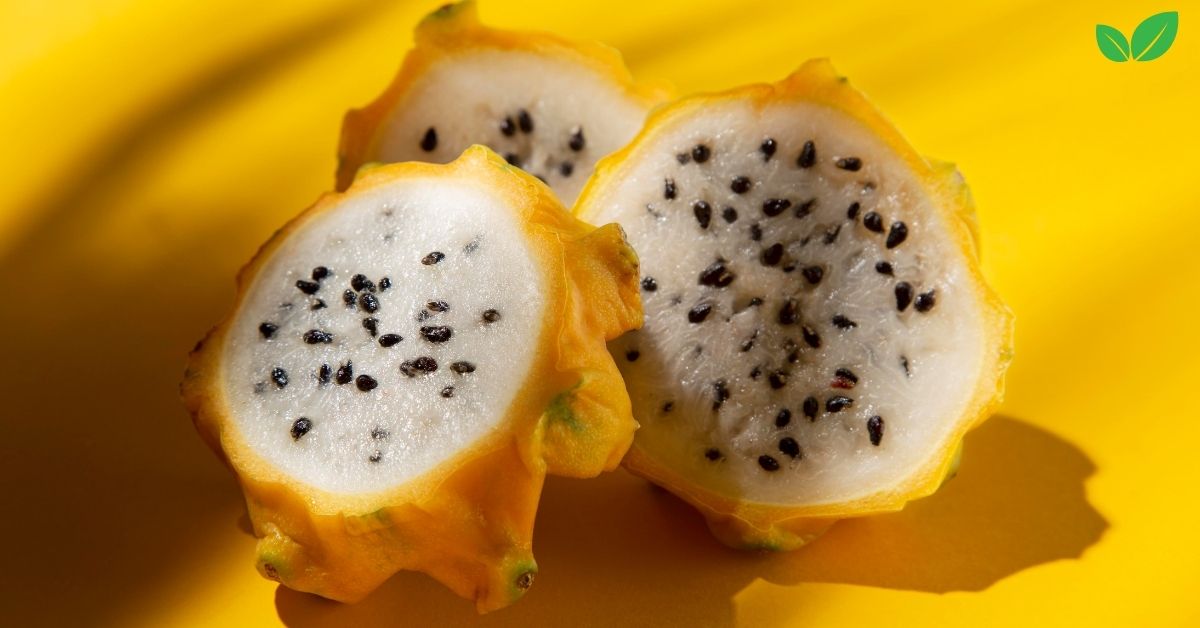Yellow dragon fruit, scientifically known as Hylocereus megalanthus, is a tropical fruit that has garnered global popularity for its unique appearance, sweet flavor, and high nutritional value. Also called yellow pitaya, this vibrant fruit is part of the cactus family and thrives in the warm, arid climates of Central and South America, as well as parts of Asia. While it is often celebrated for its health benefits, such as being rich in antioxidants, vitamin C, and dietary fiber, yellow dragon fruit also plays a significant role in sustainable agriculture and ecosystem health. This article delves into the characteristics, environmental impact, sustainable farming practices, and global significance of yellow dragon fruit, highlighting its role in fostering ecological balance and sustainable agricultural practices.
Characteristics of Yellow Dragon Fruit
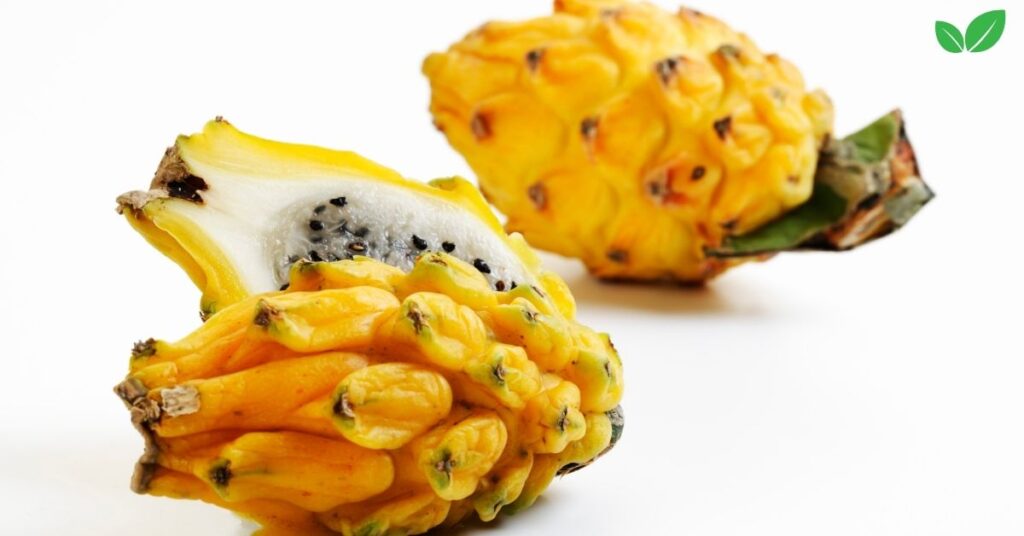
Morphological Features
Yellow dragon fruit is easily distinguished from its red and white-fleshed relatives by its bright yellow skin and white, speckled flesh. Its unique appearance and delicate flavor have made it a favorite among fruit enthusiasts and health-conscious consumers. Key characteristics include:
- Size and Shape: Yellow dragon fruit is smaller than the more common red varieties (Hylocereus undatus), with an oblong or oval shape. It typically measures around 10 to 15 centimeters in length and 6 to 10 centimeters in diameter.
- Skin and Spines: The skin of the yellow dragon fruit is bright yellow and covered in small, soft spines or tubercles that are easy to remove. Unlike other varieties, the yellow dragon fruit’s spines become less prominent as the fruit ripens, making it easier to handle.
- Flesh and Seeds: The interior of the fruit is filled with juicy, white flesh that is dotted with small, edible black seeds. The flesh is known for its delicate, sweet flavor, which is often described as a blend of pear, kiwi, and melon.
- Nutritional Value: Yellow dragon fruit is a powerhouse of nutrition. It is rich in vitamin C, vitamin A, dietary fiber, and antioxidants, which support immune health, digestion, and overall well-being. It is also low in calories and packed with hydrating properties, making it a refreshing choice for a healthy diet.
Growth and Cultivation
Yellow dragon fruit is a member of the cactus family (Cactaceae) and is well adapted to grow in arid and semi-arid climates. Its cultivation requires specific conditions to ensure optimal growth and fruit production.
- Climate Requirements: Yellow dragon fruit thrives in warm climates with temperatures ranging from 20°C to 30°C (68°F to 86°F). It requires minimal frost exposure and can tolerate drought conditions, making it well-suited to regions with dry winters and rainy summers.
- Soil Preferences: The plant prefers well-draining soil with a slightly acidic to neutral pH (6.0 to 7.5). Its roots are sensitive to waterlogged conditions, which can lead to root rot. Therefore, soil structure and proper drainage are critical for successful cultivation.
- Growth Habit: Yellow dragon fruit grows as a climbing cactus, using aerial roots to anchor itself to structures or trees. It is often cultivated on trellises or stakes to support the weight of the fruit and ensure even exposure to sunlight. The plant can grow up to 5 meters (16 feet) in height when properly trained.
- Flowering and Pollination: Yellow dragon fruit produces large, night-blooming flowers that are pollinated by nocturnal insects such as moths and bats. In some commercial orchards, hand-pollination is practiced to ensure consistent fruit set.
Ecological Significance of Yellow Dragon Fruit Cultivation
Yellow dragon fruit cultivation offers numerous ecological benefits, from soil conservation and water management to supporting local biodiversity. Its resilience and adaptability make it a valuable crop for sustainable farming practices in regions facing climate challenges.
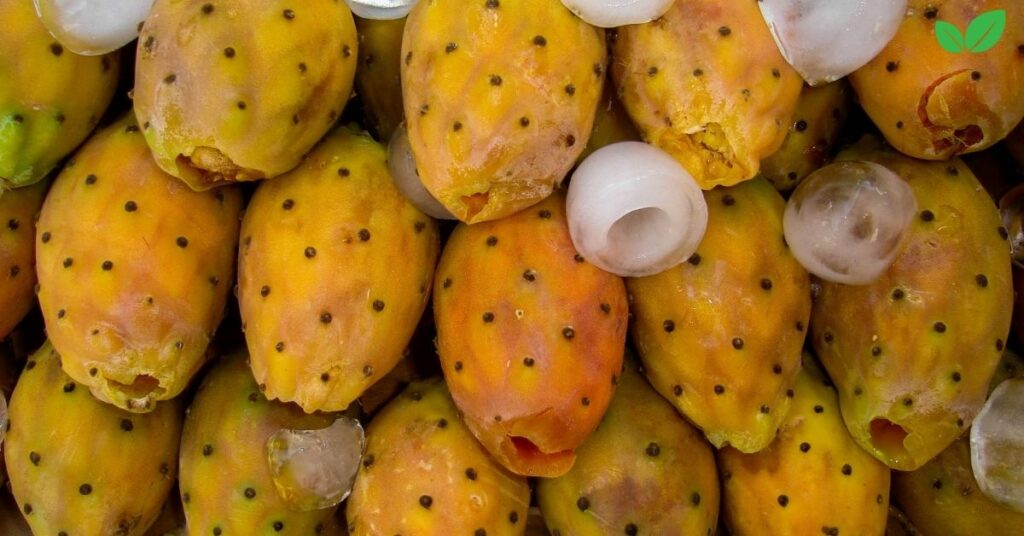
Soil Conservation and Health
The growth habits of yellow dragon fruit contribute positively to soil health and conservation. When cultivated using sustainable practices, the plant helps improve soil structure and fertility.
- Erosion Control: The deep-rooted nature of dragon fruit plants helps stabilize soil and reduce erosion, especially in sloped or hilly areas. The roots bind the soil, preventing it from being washed away during heavy rains, which is particularly important in tropical and subtropical regions prone to monsoon seasons.
- Nutrient Cycling: Yellow dragon fruit plants shed organic matter such as leaves and flowers, which decompose and enrich the soil. This organic matter supports the presence of beneficial microorganisms, contributing to improved nutrient cycling and soil fertility.
Water Efficiency and Drought Tolerance
As a member of the cactus family, yellow dragon fruit is inherently adapted to survive in water-limited environments. Its water-efficient nature makes it a suitable crop for regions where water conservation is a priority.
- Water Storage: The succulent tissues of yellow dragon fruit plants store water, allowing them to withstand dry spells. This adaptation minimizes the need for frequent irrigation, reducing the water footprint of cultivation.
- Drip Irrigation Systems: In commercial cultivation, drip irrigation is often used to deliver water directly to the plant’s roots. This method conserves water by reducing evaporation and ensuring that plants receive the precise amount of moisture needed for growth.
Role in Supporting Pollinators
Yellow dragon fruit flowers are large, fragrant, and bloom at night, attracting a variety of nocturnal pollinators, including moths, bats, and beetles. The relationship between the plant and these pollinators highlights its ecological role in supporting local biodiversity.
- Habitat for Nocturnal Pollinators: The night-blooming nature of dragon fruit flowers provides a food source for nocturnal pollinators, which play a crucial role in maintaining ecological balance. These pollinators help facilitate the reproduction of not only yellow dragon fruit but also other night-blooming plants.
- Biodiversity Support: By maintaining healthy populations of nocturnal pollinators, yellow dragon fruit cultivation contributes to the overall biodiversity of the area. This biodiversity is essential for the resilience of ecosystems, as it supports a wide range of plant and animal interactions.
Carbon Sequestration and Climate Impact
Like all plants, yellow dragon fruit plays a role in carbon sequestration by absorbing carbon dioxide during photosynthesis and storing it in its tissues. Its perennial growth habit makes it a potential contributor to long-term carbon storage in agricultural landscapes.
- Carbon Storage in Plant Biomass: The woody stems and branches of dragon fruit store carbon, which can remain sequestered in the plant’s biomass for several years. This process helps offset some of the carbon emissions associated with agricultural activities.
- Sustainable Land Use: The cultivation of yellow dragon fruit on previously degraded or underutilized land can transform these areas into productive agricultural spaces, contributing to sustainable land use practices. By rehabilitating degraded land, farmers can increase carbon sequestration while restoring ecosystem functions.
Sustainable Practices in Yellow Dragon Fruit Cultivation
To ensure the long-term sustainability of yellow dragon fruit production, many farmers and agricultural organizations have adopted practices that balance productivity with environmental stewardship. These practices help reduce the ecological footprint of cultivation and promote the health of the ecosystem.
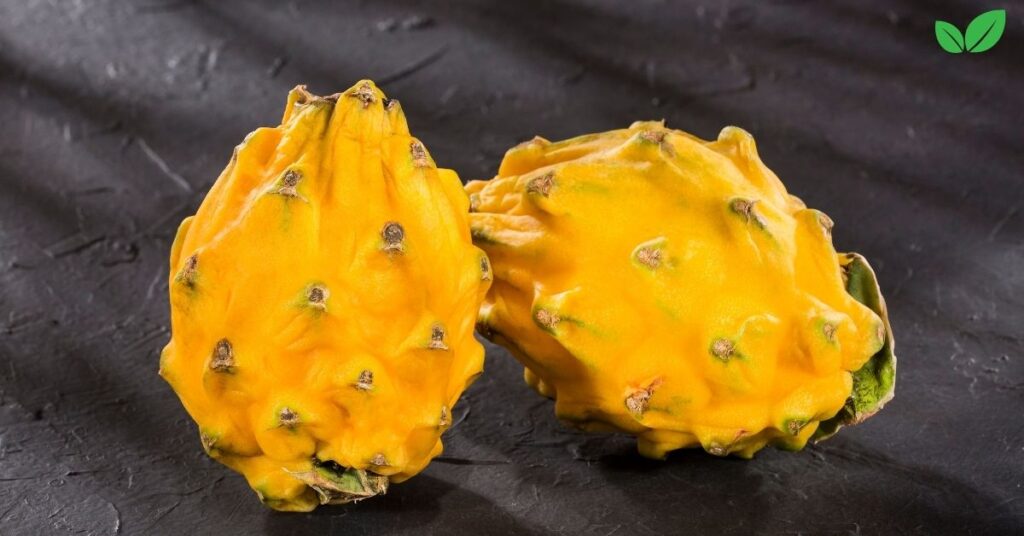
Organic Farming and Soil Management
Organic farming practices are increasingly popular among dragon fruit growers, aligning with consumer demand for sustainably produced fruits and supporting the health of the environment.
- Organic Fertilization: The use of organic fertilizers, such as compost, manure, and biochar, improves soil fertility without the negative environmental impact associated with synthetic fertilizers. Organic practices also promote the presence of beneficial soil microorganisms.
- Cover Cropping: Planting cover crops around yellow dragon fruit orchards helps improve soil structure, reduce weed growth, and increase organic matter in the soil. Cover crops like legumes can also fix nitrogen, enriching the soil for subsequent crops.
- Minimal Tillage: Minimizing soil disturbance through reduced tillage helps maintain soil structure and reduces erosion. This practice is particularly beneficial for the shallow root systems of yellow dragon fruit plants.
Agroforestry and Biodiversity Integration
Agroforestry practices, which integrate crops with trees and other vegetation, can enhance the ecological resilience of dragon fruit orchards.
- Agroforestry Systems: By planting shade-tolerant trees alongside yellow dragon fruit, farmers can create a more diverse ecosystem that offers protection against wind erosion and provides habitats for various species. This approach also helps to diversify income sources by allowing farmers to harvest multiple crops from the same land.
- Biodiversity Corridors: Maintaining natural vegetation corridors within and around yellow dragon fruit orchards helps support wildlife movement and biodiversity. These corridors provide shelter and food sources for birds, insects, and other animals, contributing to a balanced ecosystem.
Water-Saving Technologies and Climate Adaptation
With climate change affecting water availability in many regions, implementing water-saving technologies is crucial for the sustainable cultivation of yellow dragon fruit.
- Drip Irrigation: Drip irrigation systems are widely used in yellow dragon fruit cultivation to optimize water use. By delivering water directly to the roots, these systems reduce evaporation and ensure efficient water use.
- Rainwater Harvesting: In areas with seasonal rainfall, rainwater harvesting systems can capture and store rainwater for use during dry periods. This practice reduces reliance on groundwater sources and supports sustainable water management.
- Drought-Resistant Varieties: Research into breeding and selecting drought-resistant varieties of dragon fruit can help farmers adapt to changing climatic conditions. These varieties are better suited to withstand periods of low rainfall, ensuring consistent yields.
Global Production and Economic Importance of Yellow Dragon Fruit
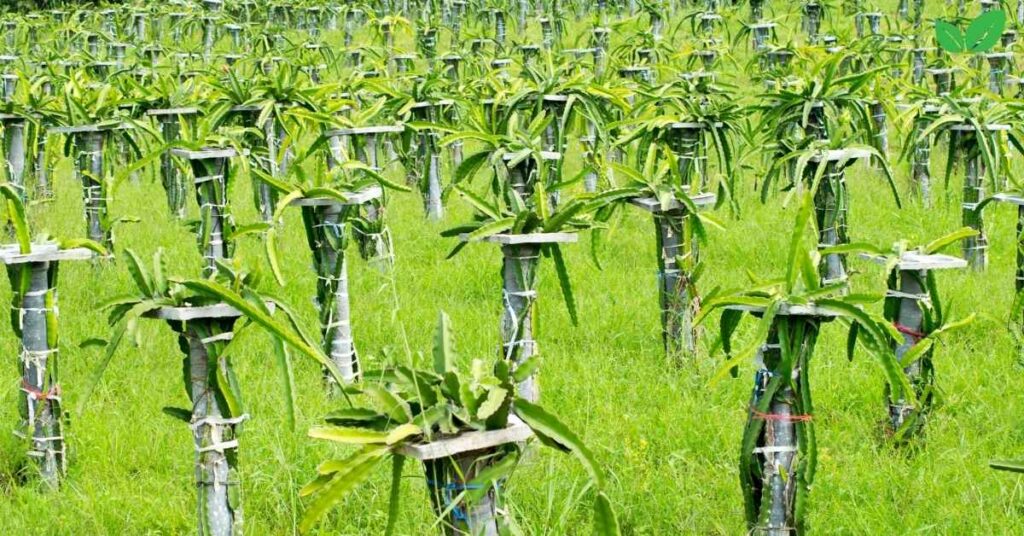
Major Growing Regions
Yellow dragon fruit is cultivated in several countries, with production concentrated in tropical and subtropical regions of Central and South America, Southeast Asia, and Australia.
- Central and South America: The native range of dragon fruit includes Colombia, Ecuador, and Peru, where the fruit has been cultivated for centuries. These regions continue to produce yellow dragon fruit for both local consumption and export.
- Southeast Asia: Countries like Vietnam, Thailand, and the Philippines have expanded their production of yellow dragon fruit, taking advantage of the warm, humid climate that suits the plant’s growth requirements. Vietnam, in particular, has become a major exporter of dragon fruit to markets around the world.
- Australia: Australia’s tropical regions, such as Queensland, have also become hubs for dragon fruit cultivation. The country’s focus on sustainable agricultural practices aligns with consumer demand for high-quality, responsibly grown produce.
Economic Benefits and Market Potential
The global popularity of yellow dragon fruit has made it a valuable crop for many farmers, offering economic benefits through domestic sales and exports.
- Export Revenue: Yellow dragon fruit has become an important export commodity for several countries, contributing to national economies. The fruit’s appeal in international markets, particularly in North America, Europe, and East Asia, has driven export growth.
- Job Creation: The yellow dragon fruit industry provides employment opportunities in farming, packaging, transportation, and distribution. Seasonal labor is often needed during the harvesting period, contributing to local economies.
- Niche Markets: The growing interest in exotic fruits and superfoods has created niche markets for yellow dragon fruit. The fruit’s high vitamin content and unique appearance make it a popular choice among health-conscious consumers, supporting premium pricing in certain markets.
Challenges in Yellow Dragon Fruit Production
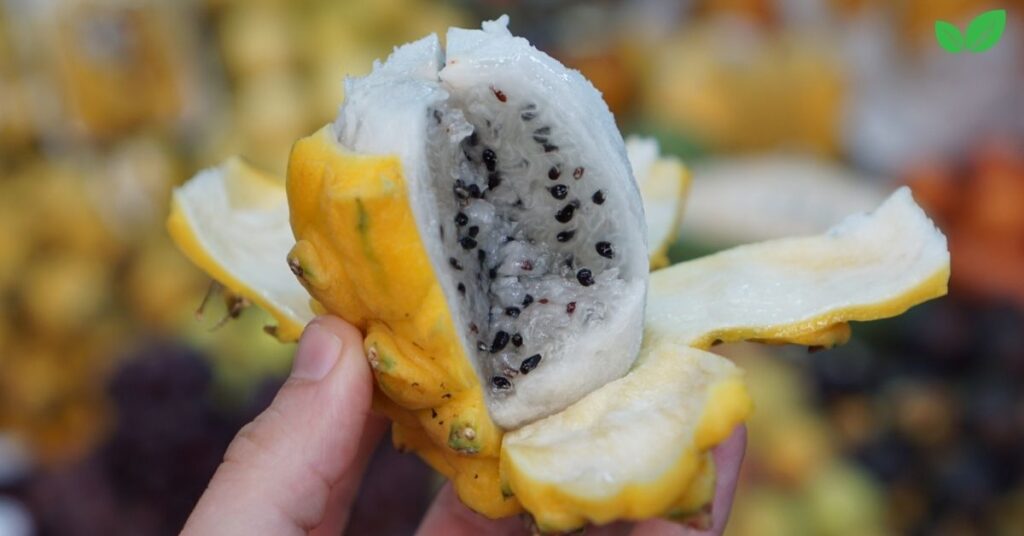
Pest and Disease Management
Yellow dragon fruit cultivation is susceptible to various pests and diseases, which can affect yield and fruit quality. Managing these challenges requires careful monitoring and sustainable practices.
- Fungal Infections: Fungal diseases such as anthracnose and stem rot can affect the health of yellow dragon fruit plants, particularly in humid conditions. Organic fungicides and proper pruning practices can help manage these infections.
- Insect Pests: Scale insects, mealybugs, and fruit flies are common pests that can damage the fruit and stems. Integrated Pest Management (IPM) strategies, including the use of natural predators and organic insecticidal soaps, can help control these pests without harming the environment.
Climate Change Impacts
Climate change presents challenges for the long-term sustainability of yellow dragon fruit cultivation, as changes in temperature and rainfall patterns can impact growth and productivity.
- Extreme Weather Events: Droughts, heatwaves, and heavy rainfall can stress yellow dragon fruit plants, leading to reduced yields and increased susceptibility to diseases. Adapting to these changes requires the implementation of climate-resilient farming practices.
- Water Scarcity: In regions where water availability is becoming less predictable, maintaining consistent irrigation levels for yellow dragon fruit is challenging. Water-saving technologies and drought-resistant varieties are critical for maintaining production.
The Role of Yellow Dragon Fruit in a Sustainable Future
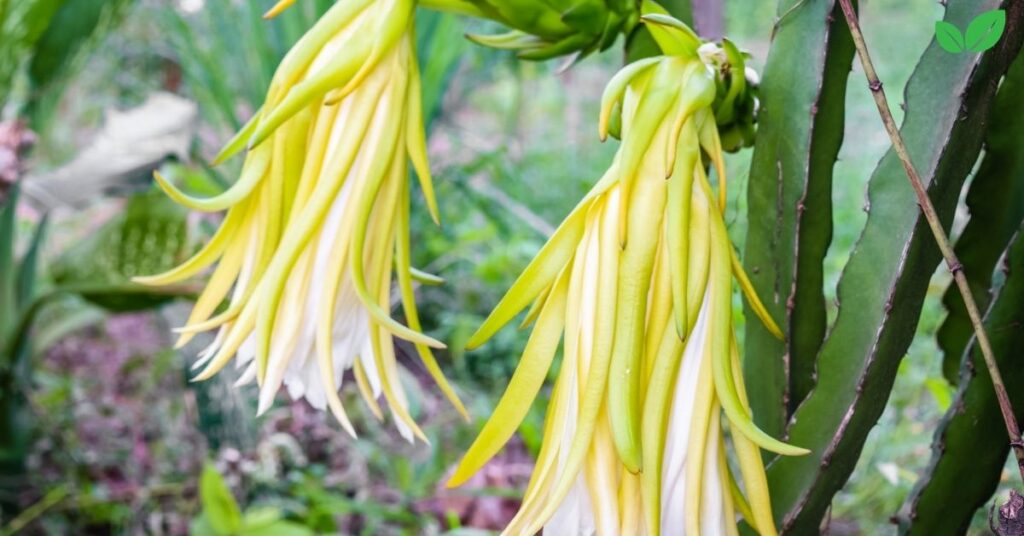
Research and Innovation
Ongoing research and innovation in yellow dragon fruit cultivation are essential for enhancing sustainability and resilience in the face of environmental challenges.
- Improved Cultivation Techniques: Research into optimizing planting densities, trellis systems, and nutrient management can help farmers increase yields while minimizing environmental impact.
- Disease-Resistant Varieties: Developing varieties that are more resistant to common pests and diseases can reduce the need for chemical inputs, making cultivation more sustainable.
Consumer Awareness and Sustainable Choices
Consumers play a crucial role in driving demand for sustainably grown yellow dragon fruit. By choosing products that are certified organic or grown using environmentally friendly practices, consumers can support a more sustainable agricultural industry.
- Eco-Friendly Certifications: Certifications such as organic, Fair Trade, and Rainforest Alliance can help consumers identify products that meet high environmental and social standards.
- Support for Local Farmers: Purchasing locally grown yellow dragon fruit can reduce the carbon footprint associated with transportation and support regional economies.
Conclusion: The Environmental and Agricultural Value of Yellow Dragon Fruit
Yellow dragon fruit is more than just an exotic fruit with a sweet taste and vibrant appearance; it represents a model for sustainable agriculture in tropical and subtropical regions. Its ability to thrive in arid conditions, support pollinator populations, and contribute to soil conservation makes it a valuable crop in the face of climate challenges.
By adopting sustainable farming practices such as organic cultivation, water conservation, and biodiversity integration, the yellow dragon fruit industry can continue to thrive while minimizing its environmental impact. As consumers become more conscious of the origins and ecological footprint of their food, yellow dragon fruit stands out as a symbol of a more sustainable, health-focused future in agriculture.
Through research, innovation, and consumer support, yellow dragon fruit can play a key role in promoting sustainable agricultural practices and preserving the delicate balance of ecosystems in regions where it is grown. As we look to the future, this golden-hued fruit offers a sweet promise of resilience, nutrition, and environmental stewardship.
Read More: Golden Kiwi 101: Everything You Need to Know About This Sweet, Nutritious Fruit

